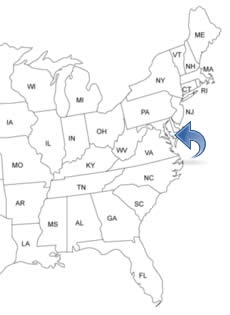MARYLAND PEOPLE SEARCH!
- ✔ Contact Info
- ✔ Phone Numbers
- ✔ Criminal Records
- ✔ Income Info
- ✔ Neighbors
- ✔ People's Age
- ✔ Property Ownership
- ✔ And Much More
Baltimore, Maryland
Baltimore is located in the central part and is the largest city in the U.S. State of Maryland. Baltimore is a popular tourist destination in Maryland and perhaps most famously known as the city where Francis Scott Key wrote the lyrics for the Star Spangled Banner. The city has 280 properties identified as historical in the National Register of Historic Places.
To See And To Do In Baltimore
- National Aquarium
- Baltimore Civil War Museum
- American Visionary Art Museum
- Baltimore & Ohio Railroad Museum
- Baltimore Maritime Museum
- Baltimore Museum of Art
- Maryland Science Center
- Urban Pirates (An adventure on a pirate ship in the Inner Harbor)
- The Children's Museum
- Visit Downtown
- The Walters Art Museum
- The Maryland Zoo
- Francis Scott Key Monument
- Washington Monument
- Miracle on 34th Street
- Patterson Park
- Edgar Allan Poe House and Museum
History Of Baltimore - Timeline
Baltimore was first settled in 1661. In 1692, the first church was built. In 1706, the Port of Baltimore was created for the tobacco trade. The harbor made the city a center for the shipping of tobacco and grain. In 1723, German immigrants began to settle in the area. In 1729 Baltimore was founded and named after Lord Baltimore, and incorporated in 1745.
The immigration to Baltimore started around 1750 and people from Germany, France, Sweden, Austria, England, Russia, Scotland, Ireland, and many people from Africa, (many were slaves but also thousands of ex-slaves) built what today is Baltimore. In 1755, Zion Lutheran Church was established by German immigrants. In 1763, a fire company was organized.
In 1770, the Henry Fite House was built. In 1773, the Baltimore Advertiser newspaper was published. In 1776, the Henry Fite House was the meeting site of the delegates from the thirteen colonies. In 1795, the Holiday Street Theater opened. They showed the first performance of Francis Scott Key's Star-Spangled Banner. In 1797, Baltimore became a city.
In 1803, Fort McHenry was built to defended Baltimore Harbor. In 1807, the University of Maryland was established. In 1814, the Battle of Baltimore took place. It was a combined sea/land battle fought between British and American forces. In 1815, the Battle Monument on Calvert Street was built.
In 1817, the first public gas street lamp was lit at Market and Lemon Streets (currently Baltimore and Holliday Streets). It was the first public gas street lamp in the country. But the history is debated. The inventor David Melville has been credited to have lighted his house and his street in Newport, Rhode Island with gas in 1805 or 1806.
In 1827, Washington Medical College was founded. The construction of a railroad in Baltimore began on July 4, 1828. The Baltimore and Ohio Railroad started one of the first commercial lines in the world. In 1829, the Washington Monument was completed. In 1837, the Baltimore Sun newspaper was published.
In 1844, a telegraph line opened between Baltimore and Washington, D.C. In 1849, the author Edgar Allan Poe was taken to the Washington Medical College where he died. In 1850 the President Street Station was built. It is the oldest surviving big city railroad terminal in the United States. In 1853, the Baltimore Police Department was established and in 1857, the Baltimore City Fire Department was formed.
In 1861, four soldiers and twelve civilians were killed in a conflict between Confederate sympathizers and members of the Massachusetts Militia, passing through Baltimore to Washington, D.C, for Federal service. It is regarded as the first bloodshed of the American Civil War.
In 1873, the Leadenhall Street Baptist Church was built for African American Baptists of the Sharp-Leadenhall area of Baltimore. In 1875, the City Hall was completed. In 1876, the Johns Hopkins University was founded. In 1896, an amusement park, Electric Park, opened. The park was the first place in Maryland to show motion pictures.
In 1900, more than 508,900 people lived in the city. In 1903, the eleven-story building "Belvedere Hotel" opened. In 1904, a fire destroyed over 1,500 buildings. More than 70 blocks of the downtown area burned to the ground.
In 1913, more than 30 seamen were killed, and about 60 injured, when a Welsh freighter exploded. 350 tons of dynamite, bound for use during construction of the Panama Canal, blew up. In 1914, the 2300-seat "Hippodrome Theatre" opened. In 1916, the professional Baltimore Symphony Orchestra was formed. In 1925, the University of Baltimore was established. In 1930, the United States Post Office and Courthouse, at 111 N. Calvert St., was built.
In 1968, two days after the assassination of Martin Luther King, Jr, The Baltimore Riot of 1968 began. The riot resulted in more than 5,500 arrests and there were seven deaths directly attributed to the rioting. In 1976, the Maryland Science Center opened. In 1982, the Joseph Meyerhoff Symphony Hall opened. In 1998, the multi-purpose football stadium "M&T Bank Stadium" opened. It is the home of the Baltimore Ravens of the NFL. In 2008, the 757–room hotel "Hilton Baltimore" opened on West Pratt Street.

